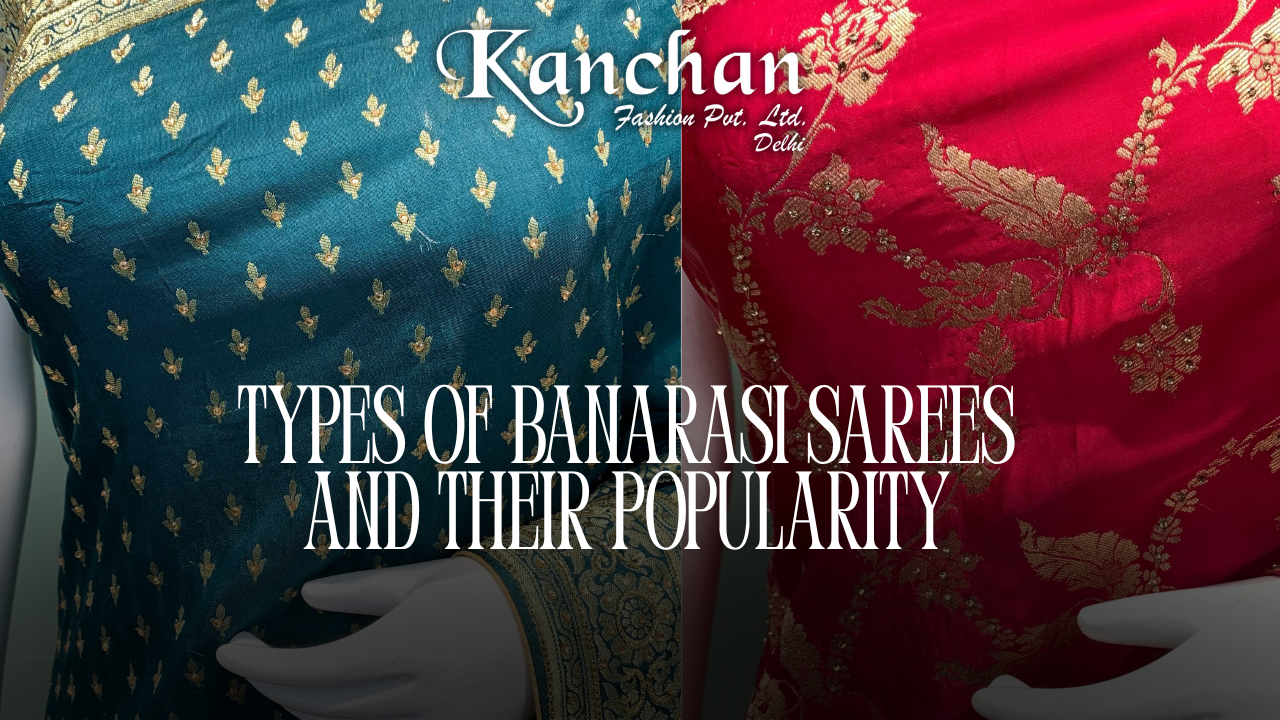
Mehndi, also known as henna, is a traditional form of body art that has been practiced for centuries in various cultures. It involves the application of intricate designs using a paste made from the leaves of the henna plant. Mehndi designs are commonly adorned on hands and feet, and they serve as a form of self-expression, celebration, and cultural heritage. if you wish to shop for best ethnic wear for women to match your mehndi, checkout Kanchan Fashion's latest ethnic wear collection for women. In this article, we will explore simple mehndi designs that are popular among women.

Table of Contents
|
Introduction
Mehndi has gained worldwide popularity as a form of body art that showcases intricate designs and patterns. Women of all ages and backgrounds embrace this art form to enhance their beauty and express their creativity. The artistry involved in creating mehndi designs has evolved over time, giving rise to various styles and trends. In this article, we will explore new and simple mehndi designs that can be easily applied and appreciated by women. The Best Product to use for mehndi has been listed below
Buy this

Top 250+ New and Easy Mehndi Designs
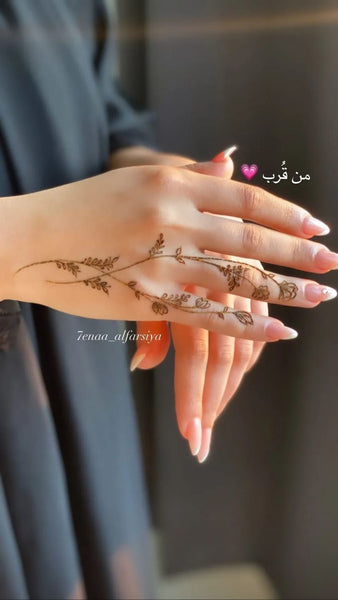









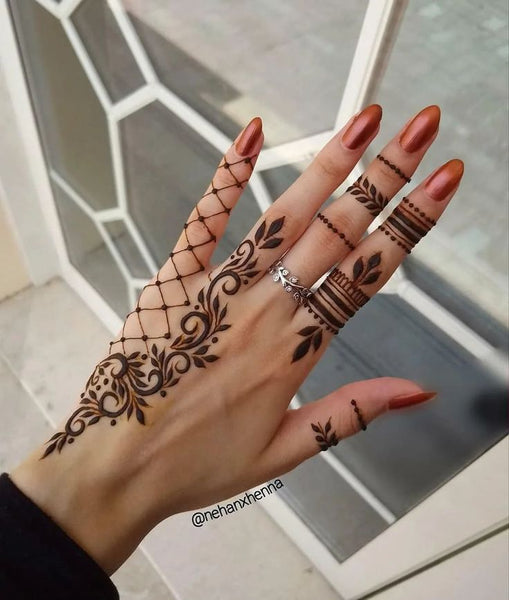











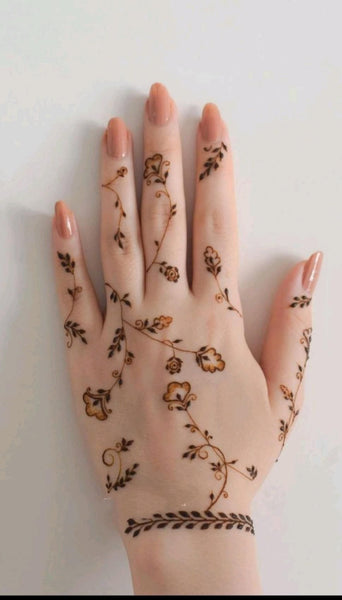







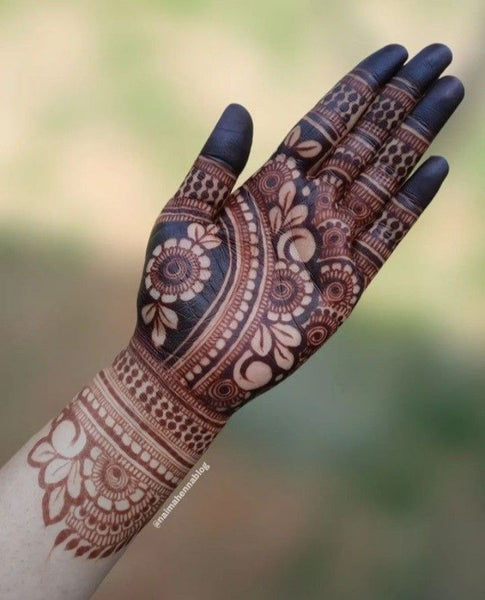


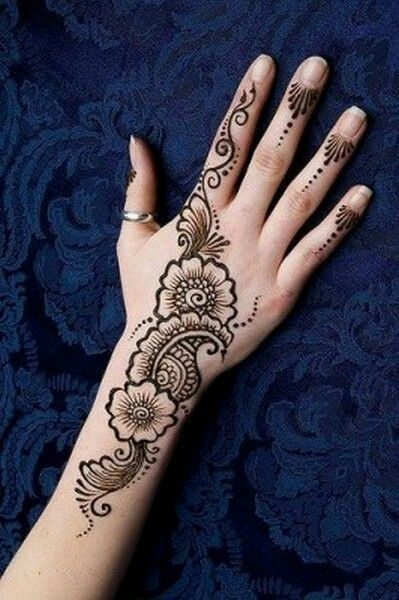

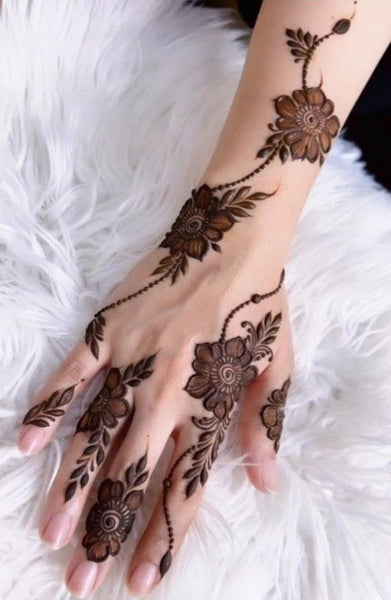





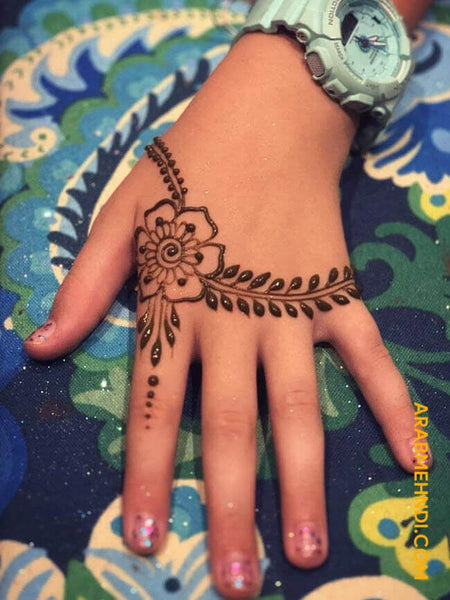









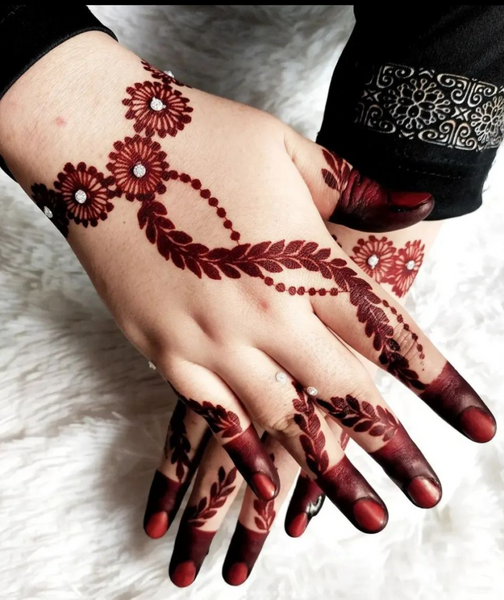



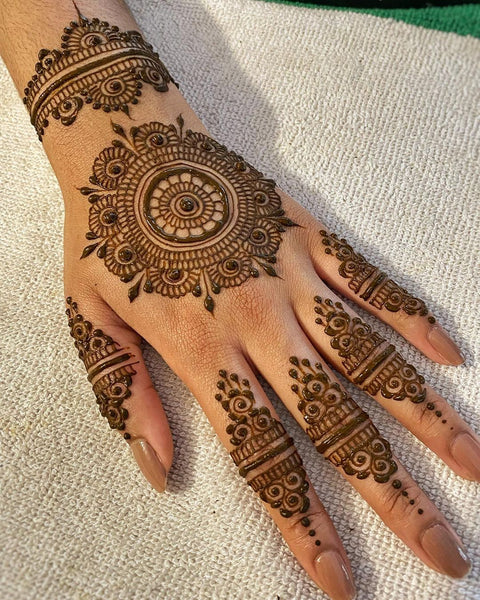
















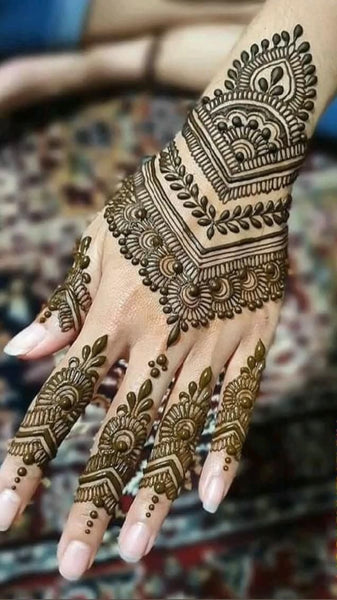

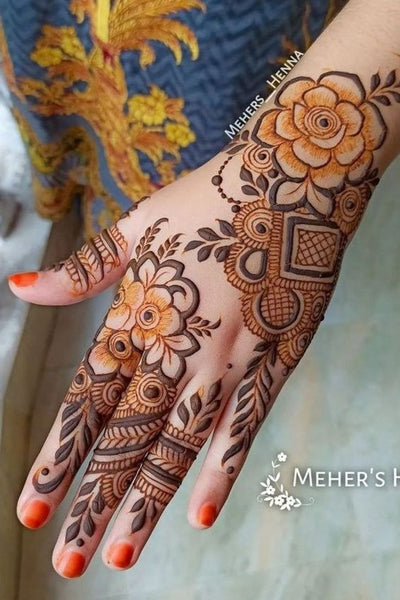




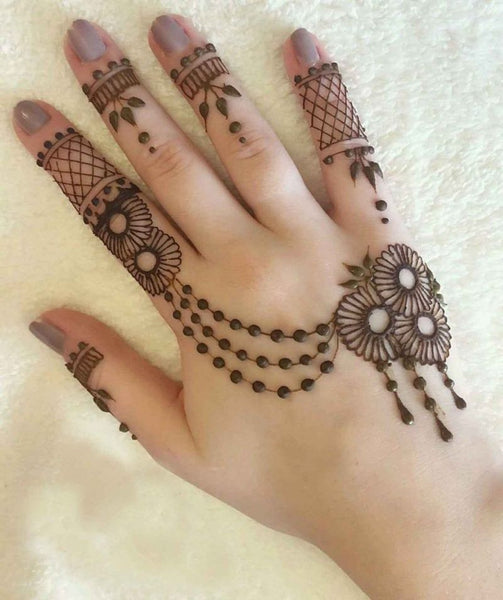

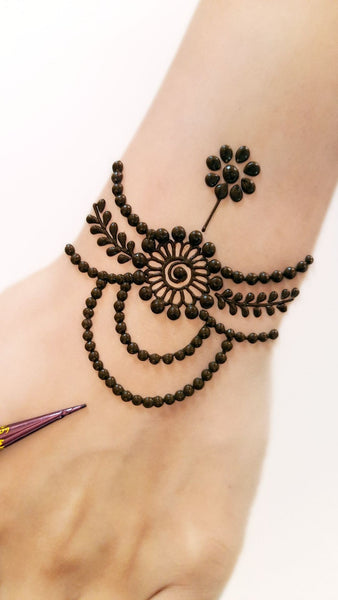


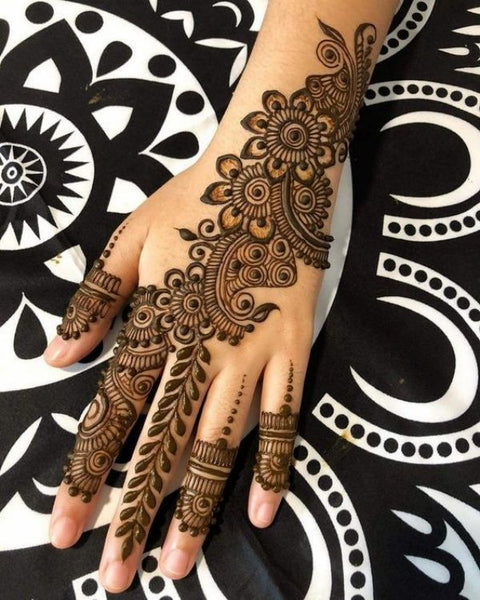




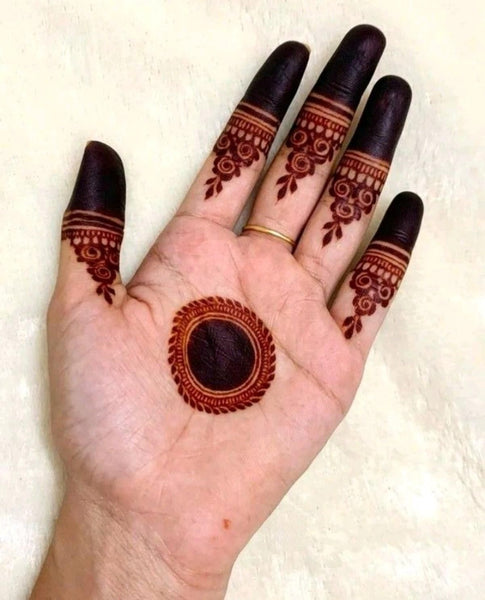
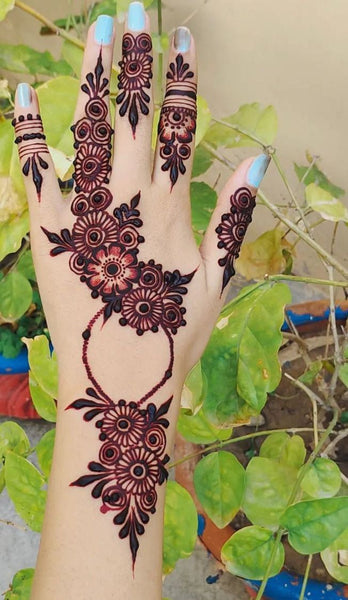









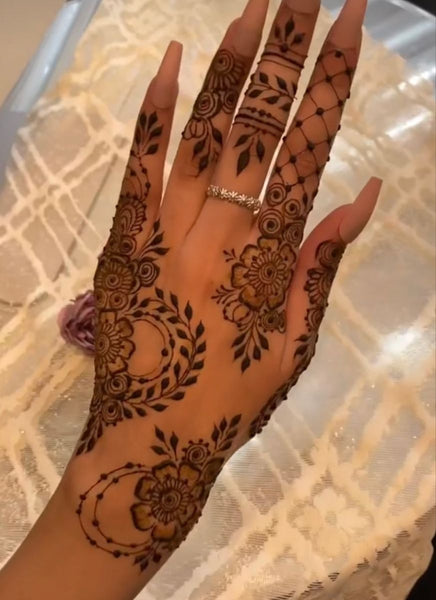


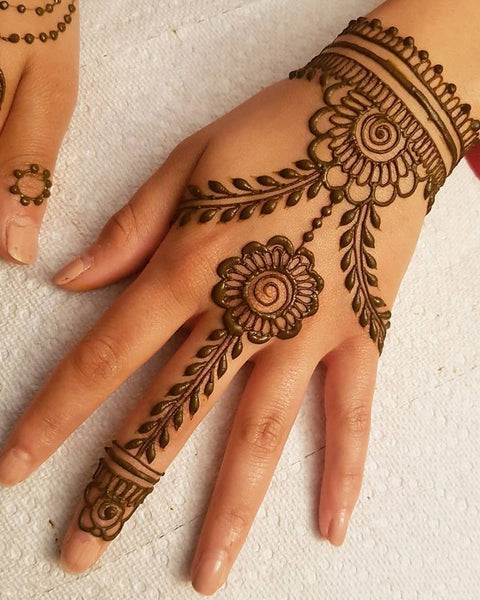

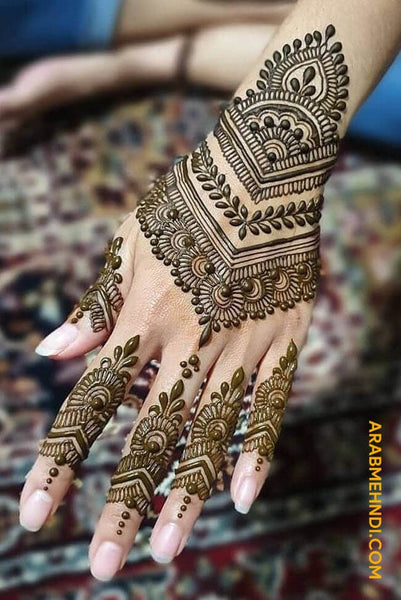








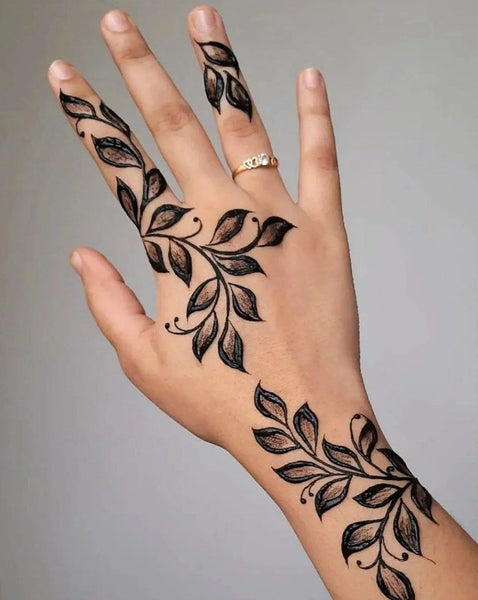








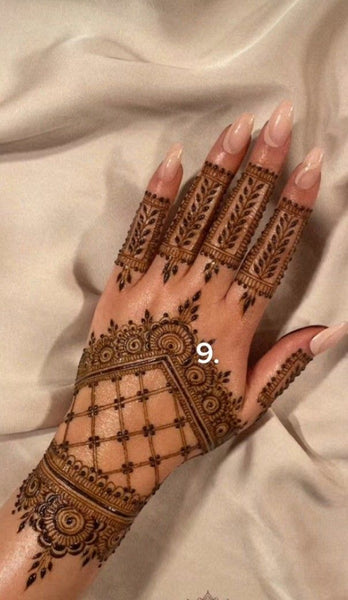







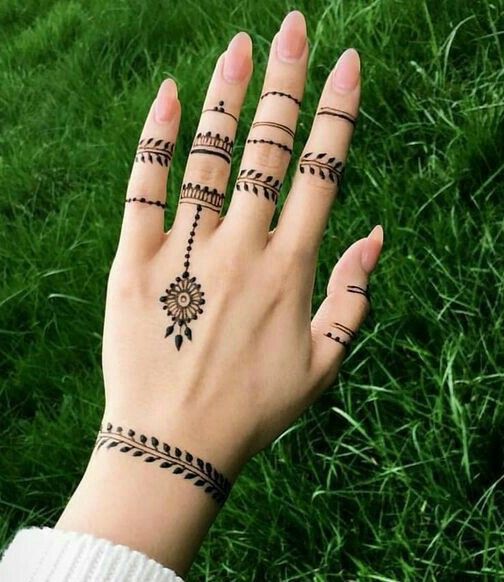









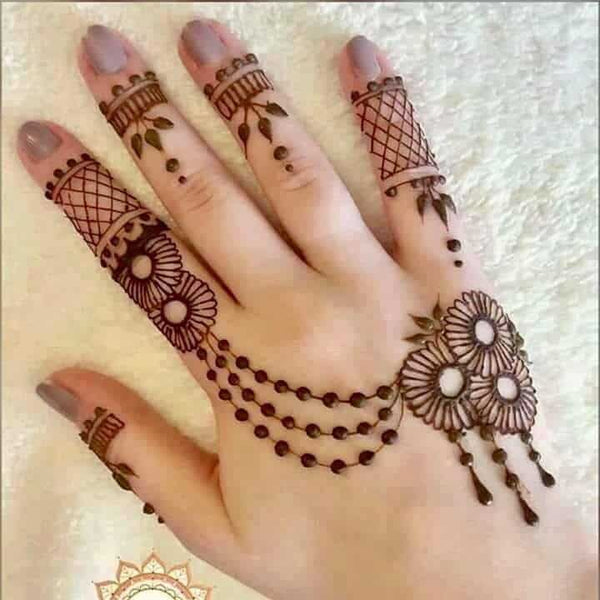













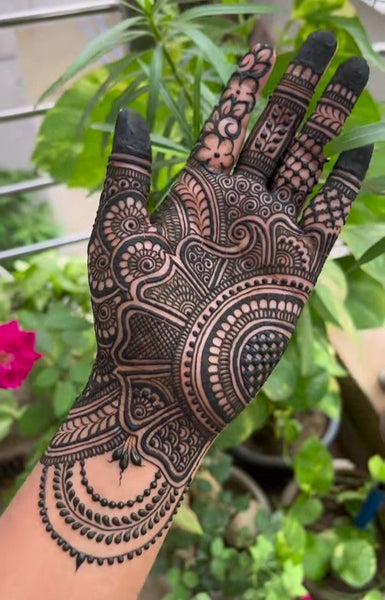
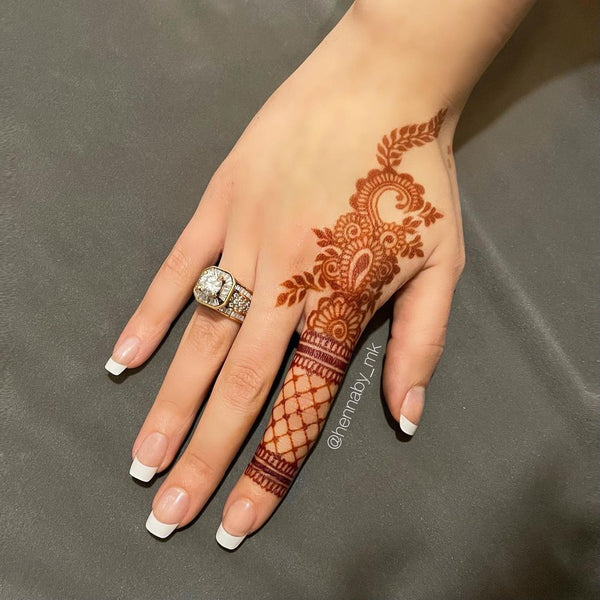














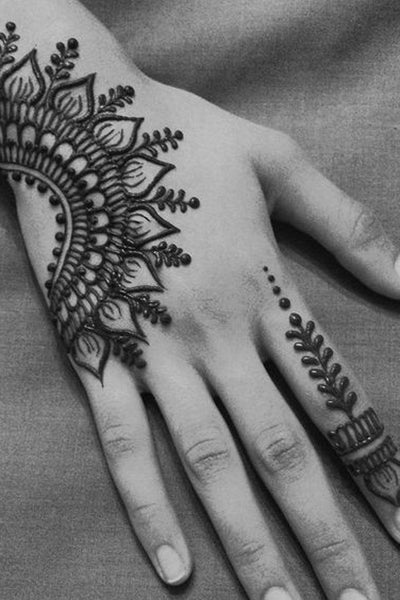





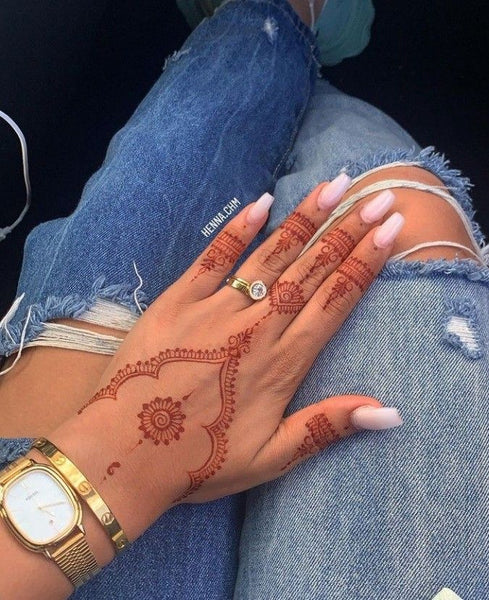


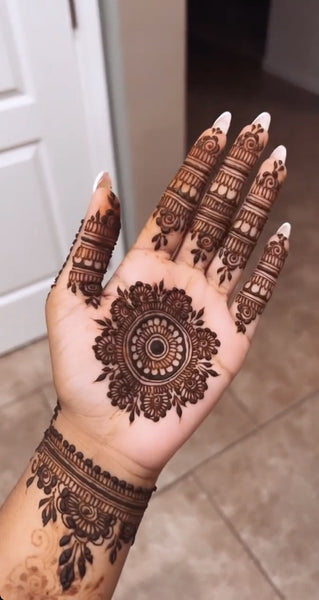



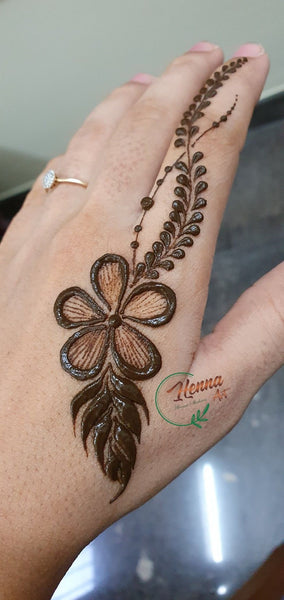

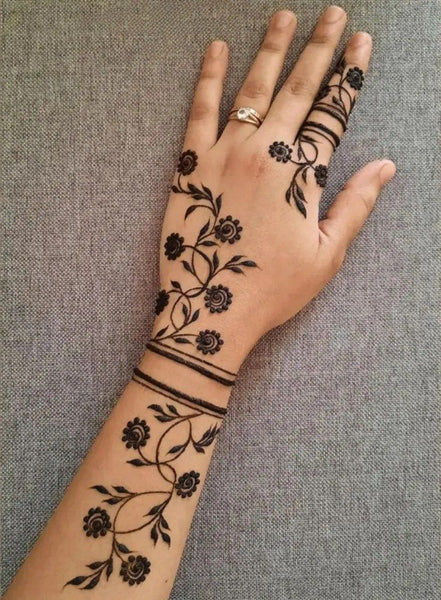



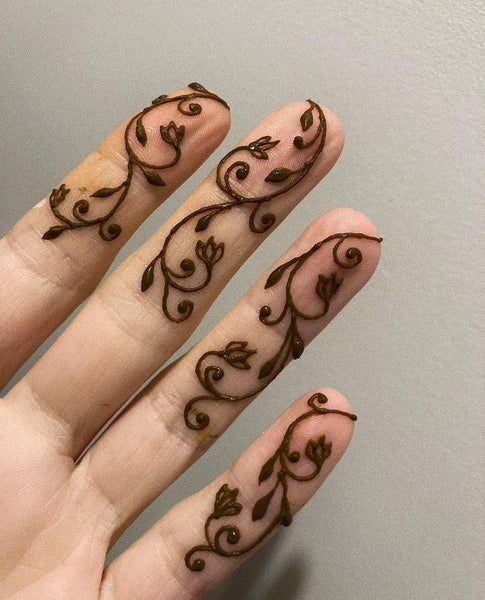
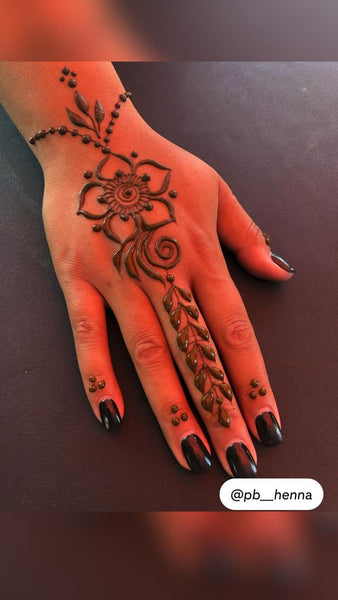




The practice of applying mehndi dates back thousands of years, originating in ancient cultures such as Egypt, India, and the Middle East. Mehndi was initially used for its cooling properties and was applied to the palms and soles of the feet. Over time, it became a popular form of body adornment, particularly during weddings, festivals, and celebrations. Today, mehndi is cherished as a cultural tradition and a symbol of auspiciousness.

Importance of Mehndi Designs
Mehndi designs hold great significance in various cultures and traditions. They symbolize joy, beauty, and the auspicious nature of special occasions. Mehndi is believed to bring good luck and ward off evil spirits. It is also considered a form of art therapy, promoting relaxation and mindfulness during the application process. Mehndi designs have become an essential part of weddings, religious ceremonies, and cultural festivals.

Factors to Consider Before Choosing a Design
When selecting a mehndi design, several factors should be taken into consideration:
- Occasion: The design should be appropriate for the event or celebration.
- Personal Style: Choose a design that resonates with your individual taste and personality.
- Complexity: Simple designs are suitable for beginners, while intricate patterns require advanced skills.
- Placement: Decide whether you want the design on your hands, feet, or both.
- Time Constraints: Consider the time required to apply the design, especially if you have limited availability.

Popular Simple Mehndi Designs
Henna Leaves

One of the simplest and most natural mehndi designs is the depiction of henna leaves. This design features the graceful outline of henna leaves, often applied in a repetitive pattern. It is a classic choice for those seeking a minimalistic yet elegant design.
Floral Patterns

Floral patterns are widely cherished in mehndi designs. They can range from intricate roses and lotus flowers to simple daisies and vines. Floral mehndi designs exude femininity and beauty, making them a popular choice among women.
Mandala Designs

Mandala designs are characterized by their intricate geometric patterns that form a central focal point. These circular designs symbolize harmony and balance. Applying a mandala mehndi design adds a touch of mystique and sophistication to your overall look.
Geometric Shapes

Geometric shapes offer a modern and contemporary twist to traditional mehndi designs. Squares, triangles, and chevron patterns can be combined to create visually striking and unique designs. Geometric mehndi designs are perfect for those who prefer a bold and edgy style.
Peacock Motifs

Peacock motifs are a classic element in mehndi designs. The intricate detailing of a peacock's feathers creates a visually captivating design. Peacock mehndi designs symbolize beauty, grace, and abundance.
Heart and Love Symbols

Incorporating heart and love symbols into mehndi designs adds a romantic touch. Hearts, arrows, and lovebirds can be intricately woven into the design, representing love, affection, and emotional connection.
Arabic Mehndi Designs

Arabic mehndi designs are characterized by their bold and elaborate patterns. They often feature bold strokes, shaded elements, and intricate detailing. Arabic designs are known for their elegance and are suitable for various occasions.
Minimalist Mehndi Designs

For those who prefer simplicity, minimalist mehndi designs offer a clean and understated aesthetic. These designs typically feature delicate lines, dots, and small patterns. Minimalist mehndi is perfect for individuals seeking a subtle yet charming look.
Finger Mehndi Designs

Finger mehndi designs focus on decorating the fingers with intricate patterns. They can range from minimalistic designs on individual fingers to elaborate designs that extend from the fingers to the hands. Finger mehndi designs add a touch of elegance and sophistication.
Bracelet Mehndi Designs

Bracelet mehndi designs encircle the wrists, mimicking the appearance of ornate bracelets. These designs often feature intricate patterns and motifs that resemble jewelry. Bracelet mehndi designs are popular among women who want to adorn their wrists without wearing actual bracelets.
Bridal Mehndi Designs

Bridal mehndi designs are elaborate and grand, often covering the entire hands and feet. These designs symbolize the sacred bond of marriage and are an integral part of wedding ceremonies in many cultures. Bridal mehndi designs incorporate elements such as peacocks, paisleys, and intricate detailing.
Festive Mehndi Designs

Festive mehndi designs are specifically created for joyous celebrations and cultural festivals. These designs are vibrant, colorful, and often include elements that represent the spirit of the occasion. Festive mehndi designs allow individuals to express their enthusiasm and excitement.
Personalized Mehndi Designs

Personalized mehndi designs incorporate elements that hold personal significance to the individual. It could be the initials of their loved ones, meaningful symbols, or significant dates. Personalized mehndi designs add a unique touch and reflect the individual's personality.
Celebrity-Inspired Mehndi Designs

Celebrity-inspired mehndi designs take inspiration from the mehndi patterns adorned by popular personalities. These designs often become trends and are sought after by individuals who admire and emulate their favorite celebrities.
Modern Mehndi Designs

Modern mehndi designs combine traditional elements with contemporary styles. They feature a fusion of geometric patterns, abstract motifs, and experimental techniques. Modern mehndi designs cater to those who seek a fresh and innovative approach to this ancient art form.
Tips for Applying Mehndi

When applying mehndi, consider the following tips for a successful and long-lasting design:
- Preparing the Henna Paste: Ensure that the henna paste is made using high-quality henna powder and mixed with the right amount of water and essential oils for a smooth consistency.
- Using Applicator Cones: Practice using applicator cones to achieve precise and controlled lines. You can create your own cones using plastic bags or purchase ready-made cones.
- Practicing on Paper or Skin: Before applying the design on your hands or feet, practice drawing the design on paper or a practice skin to familiarize yourself with the strokes and patterns.
- Taking Care of the Design: Allow the mehndi paste to dry completely before gently scraping it off. Avoid washing the area with water immediately after removing the paste to allow the color to develop fully.
Mehndi Design Care and Longevity

To ensure the longevity of your mehndi design, follow these care tips:
- Avoid Water Contact: Refrain from washing the area with water for at least 12 to 24 hours after removing the dried mehndi paste. Water can fade the color prematurely.
- Apply Lemon-Sugar Mixture: Once the mehndi paste is removed, apply a mixture of lemon juice and sugar on the dried design to intensify the color and enhance its longevity.
- Protect from Friction: Avoid rubbing or scrubbing the mehndi design vigorously, as friction can cause the design to fade or peel off.
- Moisturize Regularly: Moisturize the area with natural oils, such as coconut or olive oil, to keep the skin hydrated and prevent the design from drying out.
Mehndi and Fashion Trends

Mehndi has become an integral part of fashion trends, with designers incorporating mehndi-inspired patterns into clothing, accessories, and even home decor. These trends celebrate the beauty and versatility of mehndi designs, allowing individuals to embrace this art form in various aspects of their lives.
Mehndi for Different Occasions

Mehndi is suitable for a wide range of occasions, including:
- Weddings: Mehndi plays a significant role in bridal preparations and is applied to the bride's hands and feet in intricate designs. It is also a common practice for the female guests to apply mehndi during wedding festivities.
- Festivals: Mehndi is an essential part of cultural festivals such as Eid, Diwali, and Karva Chauth. It adds a festive touch and reflects the celebratory spirit of these occasions.
- Birthdays and Celebrations: Applying mehndi on birthdays and other celebrations is a way to enhance the festive atmosphere and express joy and excitement.
- Cultural Events: Mehndi designs are often showcased at cultural events, promoting cultural heritage and unity among diverse communities.
Mehndi and Cultural Significance

Mehndi holds immense cultural significance in various traditions and communities. It represents love, happiness, and the bond between families. In some cultures, mehndi is believed to bring good fortune and protect against negative energies. The application of mehndi is often accompanied by traditional rituals and ceremonies, fostering a sense of unity and celebration.
Conclusion

Mehndi designs have captivated women for centuries with their beauty, intricacy, and cultural significance. Whether it's a simple floral pattern or an elaborate bridal design, mehndi allows women to express their creativity and individuality. The 200 simple mehndi designs discussed in this article offer a wide range of options for women to explore and adorn themselves on various occasions. Embrace this ancient art form and let your hands and feet become a canvas for self-expression and celebration.
FAQs (Frequently Asked Questions)

-
How long does mehndi take to dry? Mehndi paste usually takes approximately 1-2 hours to dry completely. However, factors such as humidity, temperature, and thickness of the design can affect the drying time.
-
How long does mehndi color last? The color of mehndi typically lasts for 1-2 weeks. It gradually fades away as the outermost layer of skin exfoliates.
-
Can I apply mehndi on sensitive skin? Yes, mehndi is generally safe to apply on sensitive skin. However, it is recommended to do a patch test before applying it on a larger area to ensure there are no adverse reactions.
-
Can I remove mehndi color quickly? Mehndi color cannot be removed instantly. The color fades naturally over time as the skin exfoliates. However, you can try exfoliating the area gently or using natural lightening agents like lemon juice to speed up the fading process.
-
Can I use black henna for mehndi designs? It is not recommended to use black henna as it may contain harmful chemical additives like para-phenylenediamine (PPD). Natural henna, which gives a reddish-brown color, is considered safe and widely used for mehndi designs.




